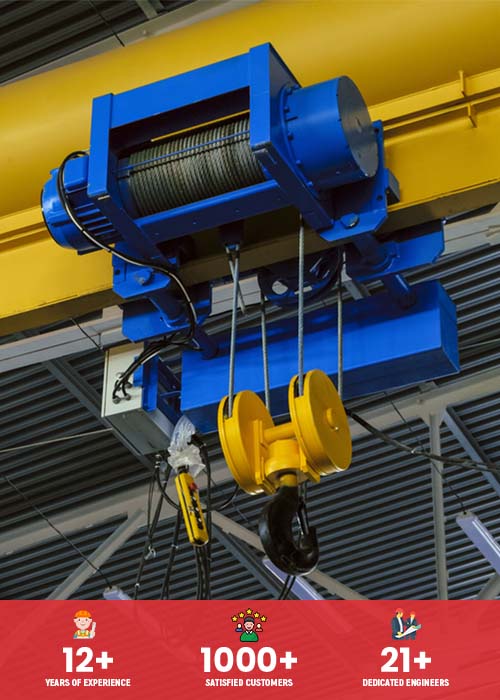Advantages of lever hoists and how they work
The lifting and rigging industry recognises traditional hand chain hoists as one of the most adaptable and dependable rigging options for a variety of tasks. However, hand chain hoists have their limitations just like any other piece of machinery. Lever hoists can perform the work in the situation. The top hoist crane manufacturers in India can help you understand the various uses of the lever hoists and their advantages.
Examining the direction in which the weight must move can help to differentiate between the two. A hand chain hoist is an excellent choice for vertical and angular lifting, but they are not appropriate for pulling in a horizontal direction. Lever hoists have the potential to function both vertically and horizontally with no difference in setup or capacity; in this case, come-alongs and Griphoists are especially mentioned as manual options with greater degrees of precision.
Consider replacing a load in a space where there is little any headroom to accommodate a clamp/trolley, hoist, or skates in the final position. What do you do when the final placement must be made exactly where the old unit was and the location forbids anchoring a winch into the ground? This is a fantastic opportunity to use a lever hoist.
First, let’s briefly go over the distinction between a come-along and a griphoist before we get started. Most frequently, people’s first thought when considering a lever hoist is a chain come-along. Come-alongs work by rotating a gear with the help of a ratchet and pawl, which pulls the chain in a straight line. Come-a-longs carry loads with greater precision than a standard manual chain hoist even if they move slowly. Come-a-longs also enable the movement of weights weighing up to 18,000 pounds with less than 80 pounds of power applied to the lever.
It’s crucial to never utilise cheater bars or other improper techniques with a chain come-along because the levers are designed for maximum safety.
Instead, Griphoists, also known as Tirfors, work with wire rope that has been carefully engineered to allow two grip-jaws inside the device to clamp down on the wire rope while alternately activating each jaw, much like a hand-over-hand pulling technique. The length of rope in your fleet or purchased from your local distributor is the only restriction on the amount of pull possible with a griphoist. However, you must be sure that the wire rope you are using is intended for use in a griphoist. An engineer should first evaluate the practicality of any anchoring places where the lever hoist can be mounted as a base in order to comply with the bolt-down requirement. It’s time to set up your hoist and start the move, provided there is a safe column or structure with a clear line of sight. The first step is to calculate the necessary force using the load’s weight and the coefficient of friction.
Without enlisting sheave blocks, which would improve the capacity by leveraging mechanical advantages, griphoists are only available in capacities up to 4 tonnes, while come-alongs are available in capacities up to 9 tonnes. You can choose between the two options knowing the precise force needed and what will work best for you. A lever hoist can be used to manage a situation like this that would have been impossible or much more difficult to perform otherwise.


